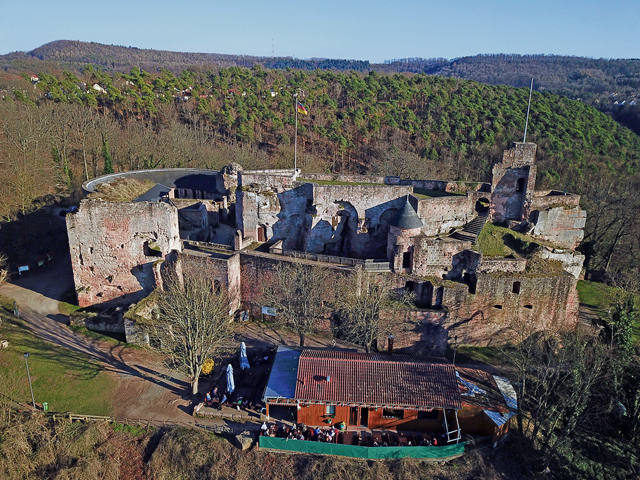
While driving though Landstuhl you’ve most likely spotted the ruins of Castle Nanstein towering above. The castle was home to Franz von Sickingen, a rebellious knight in shining armor during the late Middle Ages in the 16th century and is the city’s most prominent character.
Franz was born March 2, 1481, at Castle Ebernburg near Bad Kreuznach along the Nahe River. After the death of his father Schweikard von Sickingen, he inherited a number of individual properties between the Nahe River, the Lower Alsace region and the northern Black Forest.
At the age of 18 he married Hedwig von Flörsheim, had six children with her, when she died during childbirth of the seventh. Up until then Franz concentrated on maintaining and extending his possessions when restless years of feuds set in.
During the Middle Ages a feud was a quarrel between landowners, usually accusing one another of trying to invade or take land away. Feuds were forbidden by Canon Law, but Franz became reckless, ignored the prohibition, and offered the services of his well-equipped and mighty army to anyone who promised him economic gain. He didn’t exactly make friends with the Catholic clergy but it enabled him to fund his ambitious goals set for the future.
In 1519 Franz met Ulrich von Hutten, who was an adamant supporter of Martin Luther’s Protestant Reform movement. Castle Nanstein soon became frequent venue for meetings of leading Reformists. By late summer 1522 Franz tried to promote the reform by force and heroically marched to the City of Trier to overtake the Catholic clergy. He was stunned to be confronted by the archbishop and his mighty army. By September 14, Franz realized that he had been and outsmarted and defeated, had to cease the siege, and was forced to retreat to Castle Nanstein.
Electoral Palatinate and Hessian troops followed him, destroying several allied castles along the route to Landstuhl. By the end of April 1523 Franz was captivated in his own castle when the storm of besiegers and heavy artillery fire let the fortress crumble to ruins within a few hours. Franz was forced to recapitulate and died of his wounds May 7, 1523.
Though he neither succeeded in the end nor was able to save the famed knighthood of the era, he was declared as an ideal figure of the late Middle Ages and honored with the title “Last Knight.” The “Sickinger Herolde” is a distinguished fanfare group with drums and horns in traditional costume which parade through Landstuhl during celebrations and festivities in honor of Franz.
The City of Landstuhl is celebrating a dual anniversary this year, 700 years of City Rights and the 500 years of Franz’s passing. Watch out for the colorful men and women with their red flags, rolling drums and the sound of horns during upcoming anniversary events in Landstuhl.


